 Last additions - GIFU 岐阜県 Last additions - GIFU 岐阜県 |

There is a ring around the bird's throat, preventing it from swallowing the fish. (The bird can still swallow smaller fish.) The cormorants are caught in the wild in Hitachi, Ibaraki Prefecture and trained for ukai fishing in Gifu. 鵜Aug 23, 2008
|
|

He puts in ayu sweetfish into the cormorant's mouth. Nagara River's six cormorant fishing masters are employees of the Imperial Household Agency (Ceremonies Dept.). They are national government employees. 海鵜Aug 23, 2008
|
|
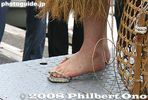
His footwear is a pair of half-slippers (ashinaka) made of straw (handmade by the fishing master). It is half the usual length. It prevents him from slipping on the fish oil and water. 足半(あしなか)Aug 23, 2008
|
|

Ukai cormorant fishing master Sugiyama Ichisaburo comes to give the ukai talk. The basket has two cormorant birds. Nagara River in Gifu has six ukai cormorant fishing masters. All of them appear nightly. 杉山市三郎Aug 23, 2008
|
|

The cap protrudes upward to make room for the topknot which the men used to have in the old days. His shirt (ryofuku) is made of cotton. He also has a fire-protection vest (muneate) that has a pocket. 漁服(りょうふく)胸あて(むあて)Aug 23, 2008
|
|

First he explains about the fishing master's costume, starting with his cap (kazaori-eboshi) made of hemp cloth. It's actually a flat piece of black or navy blue cloth wrapped around his head to protect his hair from the fire. 風折烏帽子Aug 23, 2008
|
|

At the boat dock (next to Nagarabashi Bridge) at 5:45 pm, one of the six ukai cormorant fishing masters give a short talk about ukai fishing. The crowd gathers for the talk.Aug 23, 2008
|
|

Ukai cormorant fishing viewing boat. You don't need to go as a group. You can go by yourself and just ride with other passengers. There are also boats for women only, families only, and couples only.Aug 23, 2008
|
|

Dancing boat where dancers entertain people before the ukai fishing. 踊り舟Aug 23, 2008
|
|

If you have a group of 15 or more, it would be cheaper to charter a boat to view the cormorant fishing. Some of the viewing boats are also handicapped-accessible.Aug 23, 2008
|
|

Restroom boat. During the cormorant fishing, this toilet boat is parked near the viewing boats for your convenience.Aug 23, 2008
|
|

Boat harbor for ukai viewing boats. The two boats in the foreground are restroom boats. Ukai cormorant fishing is a traditional fishing technique all but replaced by more advanced fishing methods. So it is now mainly for tourists.Aug 23, 2008
|
|

You can bring your own food and drinks on the boat. Next to the ticket office is this stone moument for a TV program which declared a song about Nagara River ukai cormorant fishing to be a national favorite for many years.Aug 23, 2008
|
|

Ukai-related poems. There's even one composed by Basho: おもしろうて やがて悲しき 鵜飼かな。 Gifu's Nagara River ukai cormorant fishing has a 1300-year history. It is recorded in the Nihon Shoki (Chronicle of Japan) and KojikiAug 23, 2008
|
|

You have several options: Course/Cruise A is slightly more expensive (3300 yen) than Course B (3000 yen) since it allows you to be on the boat for a longer time. The 6:15 pm departure time is earlier, so it gives you time to eat dinner on the boat.On weekends and holidays, the 3300 yen price is the same for both Course A and B.Aug 23, 2008
|
|

Ticket office for ukai cormorant fishing viewing boats. Behind it is Nagara River and boat dock. You can buy tickets on the day you want to view the cormorant fishing. Pamphlets in English are available. 鵜飼観覧船事務所Aug 23, 2008
|
|

Although there is cormorant fishing in other parts of Japan, Gifu's Nagara River ukai cormorant fishing is most famous because it is connected to the Imperial family. Statue of a ukai cormorant fishing master called an "usho." 鵜匠の像Aug 23, 2008
|
|

The Nagaragawa River ukai cormorant fishing is held nightly from May 11 to Oct. 15 except during the Full Moon and if the river overflows. You can buy tickets and board the viewing boats here, next to Nagarabashi Bridge. 鵜飼観覧船のりばAug 23, 2008
|
|

Marker indicating the west entrance of Imasu-juku.Aug 19, 2008
|
|

Imasu-juku on the NakasendoAug 19, 2008
|
|

Hachiman Jinja Shrine in Imasu.Aug 19, 2008
|
|

Imasu-juku's most famous stone lantern is this Eitai Joyato or Eternal Lantern which lit the road at night for travelers. 永代常夜灯Aug 19, 2008
|
|

Imasu Post OfficeAug 19, 2008
|
|

Hydrangea along the river in Imasu.Aug 19, 2008
|
|

Imasu-juku has many stone lanterns.Aug 19, 2008
|
|

Imasu-juku on the NakasendoAug 19, 2008
|
|

Aug 19, 2008
|
|

Path to Myooji temple. 妙応寺Aug 19, 2008
|
|

Shinshuji temple 真宗寺Aug 19, 2008
|
|

Aug 19, 2008
|
|

Aug 19, 2008
|
|

Imasu-juku's Toiyaba. 今須宿問屋場Aug 19, 2008
|
|

Imasu-juku's most notable shukuba-era building called the Toiyaba. It is the only Toiyaba still existing among the 16 post towns in Mino (Gifu). 今須宿問屋場Aug 19, 2008
|
|

The Toiyaba was like the town's logistics management office where they arranged lodging, horses, document deliveries, etc., for officials and travelers. Today, this building is a private residence. 今須宿問屋場Aug 19, 2008
|
|

Imasu-juku's Toiyaba. 今須宿問屋場Aug 19, 2008
|
|

Entrance to Imasu Elementary and Junior High School. This was the site of the two Waki-Honjin lodges. 今須小中学校Aug 19, 2008
|
|

Site of Imasu-juku's Honjin lodge. 今須宿本陣跡Aug 19, 2008
|
|

Site of Imasu-juku's Honjin lodge. 今須宿本陣跡Aug 19, 2008
|
|

Site of Imasu-juku's Honjin lodge. 今須宿本陣跡Aug 19, 2008
|
|

Site of Imasu-juku's Honjin lodge.Aug 19, 2008
|
|

The tall tree on a hill indicates the site of Imasu-juku's Ichirizuka or milestone. 今須宿の一里塚Aug 19, 2008
|
|

Imasu-juku's Ichirizuka or milestone. Today, Imasu is a small, sleepy cluster of houses. It has no train station, but you could walk it from Kashiwabara Station. 今須宿の一里塚Aug 19, 2008
|
|

Imasu-juku's Ichirizuka or milestone on the west end of Imasu. 今須宿の一里塚Aug 19, 2008
|
|

Monument marking Tokugawa Ieyasu's first base camp during the Battle of Sekigahara.Apr 07, 2008
|
|

Sign explaining that the two rocks below were said to be used as a bench and table for Ieyasu.Apr 07, 2008
|
|

Behind the monuments is a trail probably used by Ieyasu's troops on Mt. Momokubari-yama.Apr 07, 2008
|
|

Another smaller monument marking Tokugawa Ieyasu's first base camp during the Battle of Sekigahara.Apr 07, 2008
|
|

Steps going up to Tokugawa Ieyasu's first base camp during the Battle of Sekigahara.Apr 07, 2008
|
|

Monuments marking Tokugawa Ieyasu's first base camp during the Battle of Sekigahara. The banners have the Tokugawa family crest.Apr 07, 2008
|
|

At the top, see the two large rocks which served as a table and bench for Ieyasu. 家康の腰掛岩と机石Apr 07, 2008
|
|

View of the Sekigahara battlefield from Tokugawa Ieyasu's first base camp at Momokubari.Apr 07, 2008
|
|

Sekigahara saw one of Japan's most pivotal battles on Oct. 21, 1600 (Sept. 15 of Keicho 5) between Tokugawa Ieyasu's Eastern Forces and Toyotomi Hideyoshi loyalist Ishida Mitsunari's Western Forces. Ieyasu's victory in the Battle of Sekigahara sealed Japan's historical fate for the next 250 years. The former battlefield is dotted with monuments indicating the positions of various warlords during the battle.
This photo shows Mt. Momokubari where Tokugawa Ieyasu first set up his base camp for the Battle of Sekigahara. It is next to busy Route 21. A short distance east of Sekigahara Station. The former Sekigahara battlefield has numerous monuments.Apr 07, 2008
|
|

Ieyasu and his troops were here from about 6 am to 10 am on the day of the Sekigahara battle. He later moved closer to the front line as the battle was going his way. This is a National Historic Place. 桃配山 徳川家康最初陣跡Apr 07, 2008
|
|

Banners and a monument mark the spot on Mt. Momokubari where Tokugawa Ieyasu's first base camp was established during the Battle of Sekigahara on Sept. 15, 1600.Apr 07, 2008
|
|

Steps going up to Tokugawa Ieyasu's first base camp at Momokubari during the Battle of Sekigahara on Oct. 21, 1600 (Sept. 15 of Keicho 5). Today it's just a small hill. The highway seemed to have cut through most of it.Apr 07, 2008
|
|
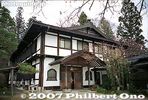
Youth hostelMar 31, 2007
|
|

Higashiyama Teramachi (Temple Row)Mar 31, 2007
|
|

View from Shiroyama ParkMar 31, 2007
|
|
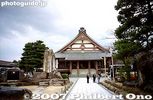
Higashiyama TeramachiMar 31, 2007
|
|

Mar 31, 2007
|
|
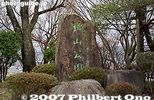
Shiroyama Park, former site of Takayama Castle.Mar 31, 2007
|
|
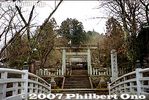
Shrine near ShiroyamaMar 31, 2007
|
|
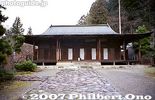
Mar 31, 2007
|
|
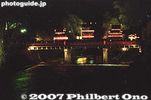
The floats cross Nakahashi Bridge.Mar 31, 2007
|
|
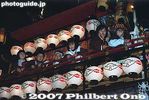
Mar 31, 2007
|
|

Held on April 14, the night procession is the festival's major highlight. 夜まつり曳行Mar 31, 2007
|
|

Mar 31, 2007
|
|

On Nakahashi Bridge.Mar 31, 2007
|
|
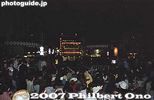
Mar 31, 2007
|
|

The floats are lit and paraded on the streets.Mar 31, 2007
|
|

Storehouse for a float. 屋台蔵Mar 31, 2007
|
|

Mar 31, 2007
|
|

Mar 31, 2007
|
|

Mar 31, 2007
|
|

Superb embroideryMar 31, 2007
|
|

Mar 31, 2007
|
|

Mar 31, 2007
|
|

Mar 31, 2007
|
|

Mar 31, 2007
|
|

Mar 31, 2007
|
|

Mar 31, 2007
|
|

Mar 31, 2007
|
|

Mar 31, 2007
|
|

Floats are displayed on the street. Takayama Matsuri, GifuMar 31, 2007
|
|
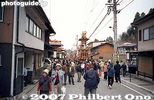
Street lined with floats.Mar 31, 2007
|
|
|
|

Ryuujintai Karakuri 龍神台からくりMar 31, 2007
|
|

The karakuri perfom one float at a time.Mar 31, 2007
|
|
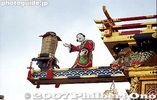
Ryuujintai Karakuri, Takayama Festival, Gifu 龍神台からくりMar 31, 2007
|
|
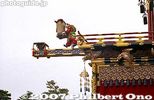
Ryuujintai Karakuri 龍神台からくりMar 31, 2007
|
|
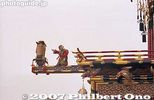
Ryuujintai Karakuri 龍神台からくりMar 31, 2007
|
|

Sanbasou Karakuri 三番叟からくりMar 31, 2007
|
|

Sanbasou Karakuri 三番叟からくりMar 31, 2007
|
|

Ryuujintai Karakuri 龍神台からくりMar 31, 2007
|
|
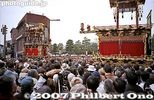
Only four of the 12 floats have karakuri puppets which perform. Takayama Matsuri, GifuMar 31, 2007
|
|

The puppets come out on a plank sticking out of the float and perform in a mini play with various stunts.Mar 31, 2007
|
|

The karakuri puppets first appeared on the Takayama Matsuri floats in the 18th century. They were handcrafted by artisans in Kyoto.Mar 31, 2007
|
|

Japan has three basic types of karakuri puppets based on the region: Kyoto, Nagoya, and Kanto (Tokyo area). The Takayama karakuri are the Nagoya-type.Mar 31, 2007
|
|

Large crowd gather to watch the karakuri puppets perform on the ornate floats.Mar 31, 2007
|
|
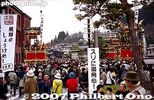
Large crowd gather to watch the karakuri puppets perform on the ornate floats. Sign says "Watch out for pickpockets."Mar 31, 2007
|
|

Shrine priestMar 31, 2007
|
|

Portable shrine 神輿Mar 31, 2007
|
|
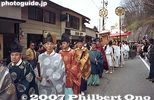
Mar 31, 2007
|
|
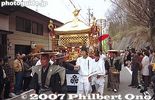
Portable shrine 神輿Mar 31, 2007
|
|
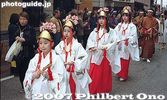
Mar 31, 2007
|
|
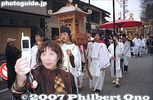
A middle-aged woman uses her camera phone to photograph herself. "I was here!"Mar 31, 2007
|
|

Shrine maidensMar 31, 2007
|
|
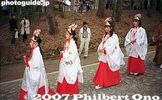
Shrine maidensMar 31, 2007
|
|

Mar 31, 2007
|
|

MikoshiMar 31, 2007
|
|

Shrine maidensMar 31, 2007
|
|
|
|
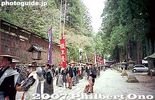
Shrine officials in the procession.Mar 31, 2007
|
|

The portable shrine (mikoshi) passes through Hie Shrine's torii to join the procession. 神輿Mar 31, 2007
|
|

Hie Shrine hall. The shrine is on Shiroyama Hill. 日枝神社On Dec. 1, 2016 (JST), Takayama Matsuri Festival was inscribed as a UNESCO Intangible Cultural Heritage of Humanity as one of 33 "Yama, Hoko, and Yatai float festivals in Japan."Mar 31, 2007
|
|

The Takayama Festival is held twice a year, during April 14-15 and Oct. 9-10. The spring festival is held by Hieda Shrine and it is called Sanno Matsuri. The festival features twelve ornate "yatai" floats which are displayed and pulled along the streets. In a large plaza, katakuri puppets perform on a few of the floats. The festival is also dramatic at night with a float procession. The Takayama Festival procession in spring starts at Hieda Shrine. Photo shows a banner reading "Hieda Jinja." 祭行列Mar 31, 2007
|
|

Mar 15, 2007
|
|

Torture room 吟味所・御白洲Mar 15, 2007
|
|

Entrance to Rice Storehouse. 御蔵Mar 15, 2007
|
|
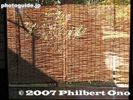
Bamboo screenMar 15, 2007
|
|
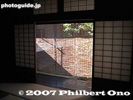
Bamboo screenMar 15, 2007
|
|
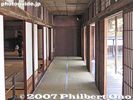
Mar 15, 2007
|
|
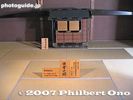
PalanquinMar 15, 2007
|
|

Large Hall (Dai-hiroma)Mar 15, 2007
|
|
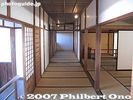
Mar 15, 2007
|
|
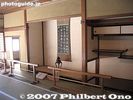
Tokonoma alcoveMar 15, 2007
|
|

Large Hall (Dai-hiroma) where ceremonies and meetings were held. It could also be partitioned into three rooms. Total area is 48 tatami mats. 大広間Mar 15, 2007
|
|

Bath areaMar 15, 2007
|
|

ToiletMar 15, 2007
|
|

KitchenMar 15, 2007
|
|
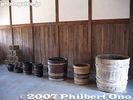
Mar 15, 2007
|
|

Mar 15, 2007
|
|

Mar 15, 2007
|
|
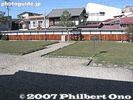
Mar 15, 2007
|
|

Mar 15, 2007
|
|

Magistrate's living quarters 居宅(嵐山の間)Mar 15, 2007
|
|

Mar 15, 2007
|
|

Mar 15, 2007
|
|

Mar 15, 2007
|
|

Mar 15, 2007
|
|

Mar 15, 2007
|
|

Mar 15, 2007
|
|

Mar 15, 2007
|
|

Mar 15, 2007
|
|

Mar 15, 2007
|
|
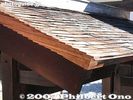
Mar 15, 2007
|
|

Mar 15, 2007
|
|

Mar 15, 2007
|
|

Mar 15, 2007
|
|

Mar 15, 2007
|
|

The main building was built in 1816.Mar 15, 2007
|
|

View of Administrator's office from the verandaMar 15, 2007
|
|
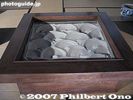
Mar 15, 2007
|
|

Magistrate's (governor) office 御役所Mar 15, 2007
|
|

Entrance to Takayama Jinya. A Jinya was a regional government office during the Edo Period. The Tokugawa government dispatched magistrates to administer the region. About 60 jinya existed and only this one survives.Mar 15, 2007
|
|

Gate to Takayama JinyaMar 15, 2007
|
|

For 176 years or 25 generations, the building housed government administrators, accountants (rice tax collectors), and the police.Mar 15, 2007
|
|

Mar 15, 2007
|
|

This area is also a National Important Traditional Townscape Preservation District (重要伝統的建造物群保存地区).Mar 15, 2007
|
|

Mar 15, 2007
|
|

Beckoning catMar 15, 2007
|
|

Former Takayama-cho Town Hall 旧高山町役場Mar 15, 2007
|
|

Former Takayama-cho Town Hall 旧高山町役場Mar 15, 2007
|
|

Sanno-machi Suji is in Takayama's National Important Traditional Townscape Preservation District (重要伝統的建造物群保存地区).Mar 15, 2007
|
|

Storehouse for a Takayama Festival floatMar 15, 2007
|
|

Former Takayama-cho Town Hall 旧高山町役場Mar 15, 2007
|
|

Mar 15, 2007
|
|

Nakahashi BridgeMar 15, 2007
|
|

Mar 15, 2007
|
|

Nakahashi Bridge. During the Takayama Festival, ornate floats cross this bridge. 宮川に掛かる中橋Mar 15, 2007
|
|

Nakahashi Bridge and pine treeMar 15, 2007
|
|

Nakahashi BridgeMar 15, 2007
|
|

Mar 15, 2007
|
|

Nakahashi Bridge over Miyagawa River 宮川に掛かる中橋Mar 15, 2007
|
|

Tourist info officeMar 15, 2007
|
|

Shopping streetMar 15, 2007
|
|

Bus terminal for Nohi BusMar 15, 2007
|
|

Miyagawa River 宮川Mar 15, 2007
|
|

JR Takayama Station, tourist info office on left.Mar 15, 2007
|
|

JR Takayama StationMar 15, 2007
|
|

JR Takayama StationMar 15, 2007
|
|

Many attractions are within walking distance from JR Takayama Station.Mar 15, 2007
|
|

JR Takayama StationMar 15, 2007
|
|

Turnstile at JR Takayama StationMar 15, 2007
|
|

Waiting room at JR Takayama StationMar 15, 2007
|
|

The old JR Takayama Station. This building has been replaced by a new one. 高山駅Mar 15, 2007
|
|

Monumental tree next to Hachiman ShrineJan 17, 2007
|
|

Hachiman ShrineJan 17, 2007
|
|

Monumental treeJan 17, 2007
|
|

Jan 17, 2007
|
|

Jan 17, 2007
|
|

Jan 17, 2007
|
|

Jan 17, 2007
|
|

Fuwa-no-seki Museum's model of an ancient warriorJan 17, 2007
|
|

Site of Fuwa-no-seki Gate 不破関Jan 17, 2007
|
|

Fuwa-no-seki Museum 不破関資料館Jan 17, 2007
|
|

Inside Fuwa-no-seki Museum 不破関資料館Jan 17, 2007
|
|
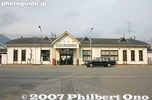
JR Sekigahara Station on the Tokaido Line 東海道線 関ヶ原駅Jan 17, 2007
|
|

Site of Fuwa-no-seki Gate 不破関Jan 17, 2007
|
|

Site of Fuwa-no-seki Gate (no entry) 不破関Jan 17, 2007
|
|

Central Sekigahara townJan 17, 2007
|
|

Shimazu YoshihiroJan 16, 2007
|
|

Art park to commemorate the 400th anniversary of the battle in the year 2000. Near the Shimazu position.Jan 16, 2007
|
|

Path to/from Shimazu Yoshihiro's monument.Jan 16, 2007
|
|

Shimazu YoshihiroJan 16, 2007
|
|

Hill where Shimazu was.Jan 16, 2007
|
|

Fukushima Masanori's position and shrine.Jan 16, 2007
|
|

Monument for Shimazu Yoshihiro's position.Jan 16, 2007
|
|

Site where the battle started as seen from Shimazu Yoshihiro's position.Jan 16, 2007
|
|

Monument marking the site of Todo Takatora and Kyogoku Takatomo's position.Jan 16, 2007
|
|

Path to Shimazu Yoshihiro's position.Jan 16, 2007
|
|

Monument for Shimazu Yoshihiro from Satsuma (Kagoshima). Ishida asked for his assistance at 10 am, but was refused.Jan 16, 2007
|
|

Signs show the way and distance to the various monuments.Jan 16, 2007
|
|

Site of Fukushima Masanori's position. 福島正則陣跡Jan 16, 2007
|
|

Shimazu Yoshihiro's position.Jan 16, 2007
|
|

Banners mark the site of Todo Takatora and Kyogoku Takatomo's position.Jan 16, 2007
|
|

Monument at West Burial Site, Nishi KubizukaJan 16, 2007
|
|

Monument marking Fukushima Masanori's position.Jan 16, 2007
|
|

Rear view of monument marking the site of Todo Takatora and Kyogoku Takatomo's position.Jan 16, 2007
|
|

Jan 16, 2007
|
|

Site of Todo Takatora and Kyogoku Takatomo's position.Jan 16, 2007
|
|

West Burial Site, Nishi Kubizuka 西首塚Jan 16, 2007
|
|

Banners with Kyogoku Takatomo's crest.Jan 16, 2007
|
|

Memorial shrineJan 16, 2007
|
|

Jan 16, 2007
|
|

West Burial Site, Nishi Kubizuka 西首塚Jan 16, 2007
|
|

Site of Todo Takatora and Kyogoku Takatomo's position now within the grounds of junior high school. 藤堂高虎・京極高知陣跡Jan 16, 2007
|
|

Site of Todo Takatora and Kyogoku Takatomo's position.Jan 16, 2007
|
|

East Burial Site, where the decapitated heads of the Western force leaders were buried. 東首塚Jan 16, 2007
|
|

Monument at West Burial Site, Nishi Kubizuka 西首塚Jan 16, 2007
|
|

Jan 16, 2007
|
|

West Burial Site, Nishi Kubizuka 西首塚Jan 16, 2007
|
|

Jan 16, 2007
|
|

Jan 16, 2007
|
|

West Burial Site for the corposes of West Forces leaders. Nishi Kubizuka 西首塚Jan 16, 2007
|
|

Monument marking Ii Naomasa and Matsudaira Tadayoshi's position. 井伊直政・松平忠吉 陣跡Jan 16, 2007
|
|

Jan 16, 2007
|
|

Monument marking Ii Naomasa and Matsudaira Tadayoshi's position. 井伊直政・松平忠吉 陣跡Jan 16, 2007
|
|

Well where the decapitated heads of Western Force leaders were washed.Jan 16, 2007
|
|

Site where the battle started and Mt. Matsuo in the background.Jan 16, 2007
|
|

East Burial Site, where the decapitated heads of the Western force leaders were buried. 東首塚Jan 16, 2007
|
|

Memorial treeJan 16, 2007
|
|

Monument for Konishi Yukinaga's station. 小西 行長陣跡Jan 16, 2007
|
|

Area around Konishi Yukinaga's position.Jan 16, 2007
|
|

Monument marking the site where the Sekigahara battle started. 開戦地Jan 16, 2007
|
|

Path to Konishi Yukinaga's station, near where the battle started.Jan 16, 2007
|
|
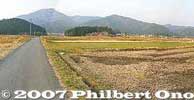
Panoramic view of where the Battle of Sekigahara started. Most battle monuments are within walking distance from the train station, but they are numerous and spread over a wide area.The battle started at the foot of the hill on the left of the road. The small hill on the right was where Shimazu Yoshihiro was stationed. Mt. Ibuki is in the background in the middle.Jan 16, 2007
|
|

Monument marking Ii Naomasa and Matsudaira Tadayoshi's position.Jan 16, 2007
|
|

Ii Naomasa and Matsudaira Tadayoshi's position, near Sekigahara Station. And also next to Higashi Kubizuka.Jan 16, 2007
|
|

Monument for Konishi Yukinaga's station. 小西 行長陣跡Jan 16, 2007
|
|

Monument for Konishi Yukinaga's station. 小西 行長陣跡Jan 16, 2007
|
|
| 2991 files on 12 page(s) |
 |
 |
 |
 |
11 |
|